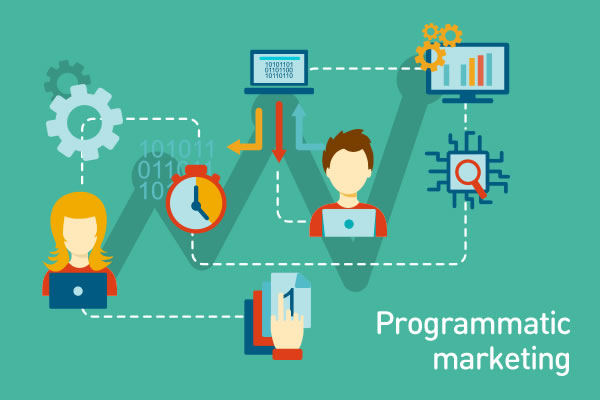Online marketing blog
Read about the latest industry trends and AdCumulus specials.
Beginner’s guide to programmatic advertising: 18 important terms you should know
By on 3. February 2016.

It’s a good time to be an advertiser. Millions of people can be found in the same place at any moment – the Internet – which makes it easier than ever to reach your (potential) customers. Therefore, it is not surprising that the advertising industry has successfully integrated Internet into its strategies.
The rise of technology has positively reflected itself on advertising methods and accessibility of user data, making the whole process more effective. These changes have contributed to the rise of programmatic advertising.
What is programmatic advertising?
Programmatic advertising is an alternative to traditional methods of ad buying. Instead of having people involved in every stage of the process, programmatic advertising relies on automated software as a faster and more effective option for managing the selling and buying of ads.
The number of advertisers who have recognized advantages of programmatic advertising is rapidly increasing. As already mentioned, programmatic advertising replaces people in certain tasks, which makes it less expensive and more reliable. Furthermore, it allows a more efficient targeting of potential customers by offering only the content that may interest them. This results in less wasted ads, more profitable investments, and a better user experience.
This article explains 18 important terms related to programmatic advertising which can help you understand it better.
Let’s get started!
1. Impression – an ad exposure. Every time an ad is displayed on the user’s device, it counts as one impression. Impressions are used to measure the impact of an advertising campaign.
2. Bid request – a request sent to the ad exchange when a user visits a webpage in order to start RTB and retrieve an ad. Bid request contains some information about the user, such as the user’s location, age, browsing history, and similar metadata based on which an ad can be selected.
3. Ad network – an online platform that aggregates ad inventory from certain publishers and sells it to advertisers based on their demands.
4. Ad exchange – an automated digital marketplace that handles the buying and selling of ad inventory through real-time auctions.
5. Price floor – the lowest price which a seller is ready to accept for an ad placement.
6. Real-time bidding (RTB) – a type of programmatic ad buying. It enables the purchase of ad inventory through real-time auctions that occur before a webpage is loaded on a user’s device.
7. Win rate – a percentage metric that measures the effectiveness of a bidding strategy. It can be easily calculated by dividing the total number of impressions won by the total number of submitted bids.
8. Ad server – a platform that hosts digital ads and displays them to users when they visit websites. It also provides important campaign analytics. The best ad servers enable advertisers’ to monitor conversions and other important factors in a campaign, such as engagement metrics.
9. Supply-side platform (SSP) – an automated piece of software used by publishers which allows them to manage their ad inventory and sell it to advertisers on various ad exchanges and networks.
10. Demand-side platform (DSP) – an automated piece of software used by advertisers to buy ad inventory through ad exchanges or ad networks.
11. First-party data – data that advertisers or publishers collect directly from their customers. It usually includes data from advertising campaigns, CRM, subscription or loyalty data, and behavioral data related to consumers’ activity on advertisers’ websites.
12. Second-party data – another company’s first-party data that can be purchased or traded.
13. Third-party data – data that is collected and sold by an entity which is not directly connected with costumers. This data can be gathered from both online and offline sources. It is used to form audience segments for targeted campaigns.
14. Data Management Platform (DMP) – a technology platform that collects, stores and analyzes user data from different sources, such as first-party and third-party data. A DMP can provide a better customer insight through analysis and segmentation of users based on their attributes. This results in better targeting and more efficient advertising campaigns.
15. Ad inventory – the amount of ad space that a publisher has available for sale.
16. CPM (Cost per Mile) – cost per thousand impressions, i.e. the price which an advertiser pays for a thousand impressions.
17. Return on investment (ROI) – a metric that measures how much profit has a specific investment brought. High ROI shows that an investment was efficient, while low ROI indicates that its costs exceeded the gained profit.
18. Retargeting – an advertising strategy that involves offering specific content to your bounced traffic in order to increase the chances of their conversion.
Programmatic advertising being on the rise, it’s important to know your way around its most important terms. If this concept is unfamiliar to you, consider this glossary your first step into the exciting world of programmatic advertising. Use that knowledge to explore that world and prepare for its dynamic nature.





Comments